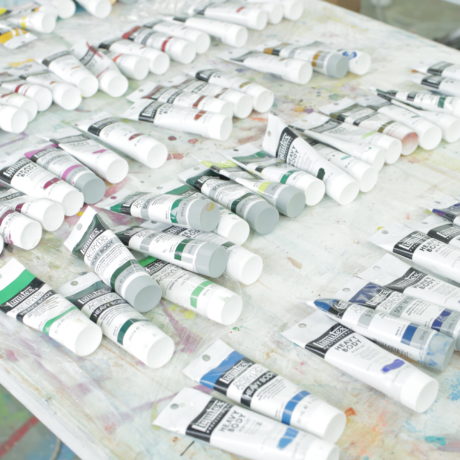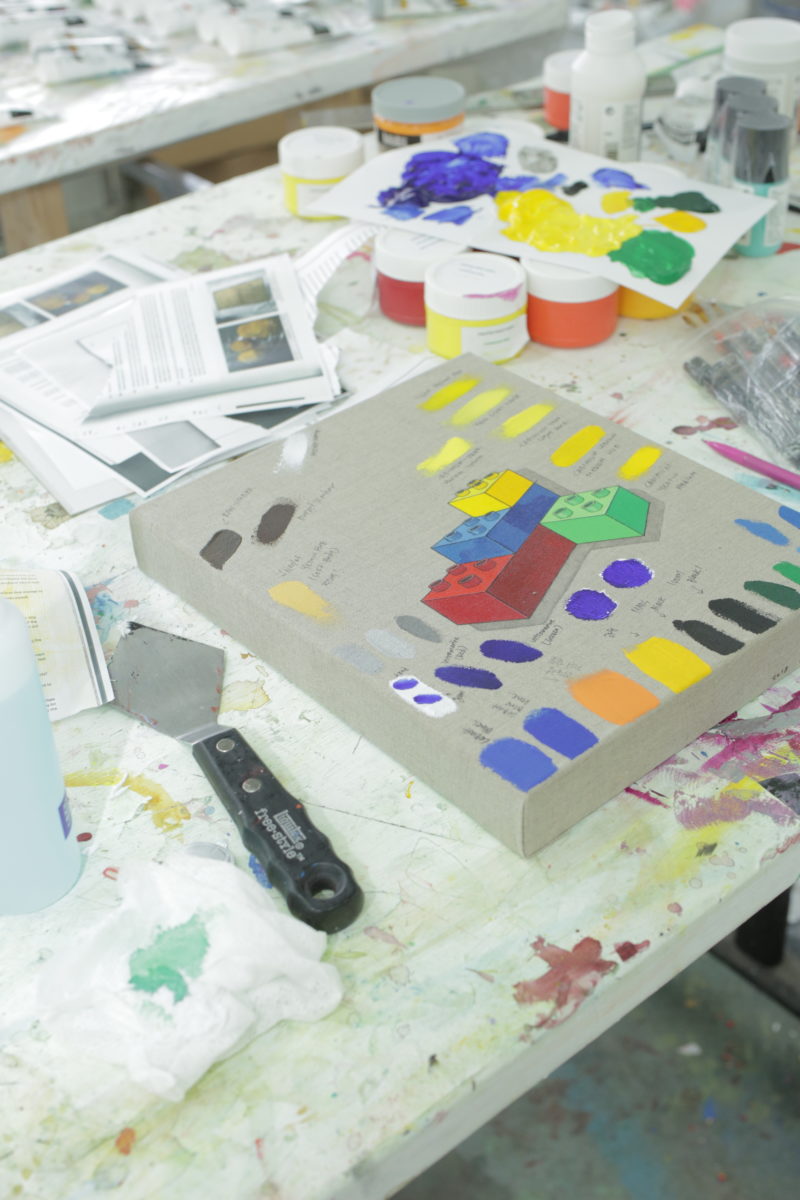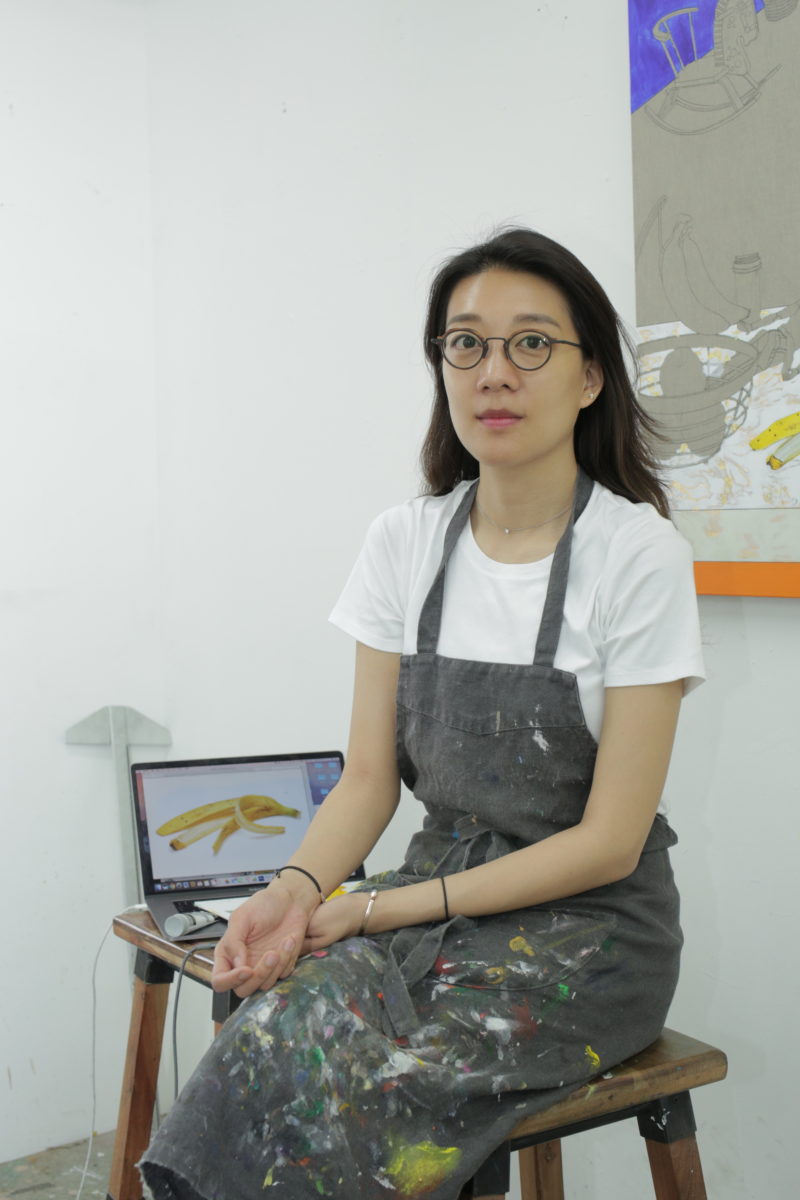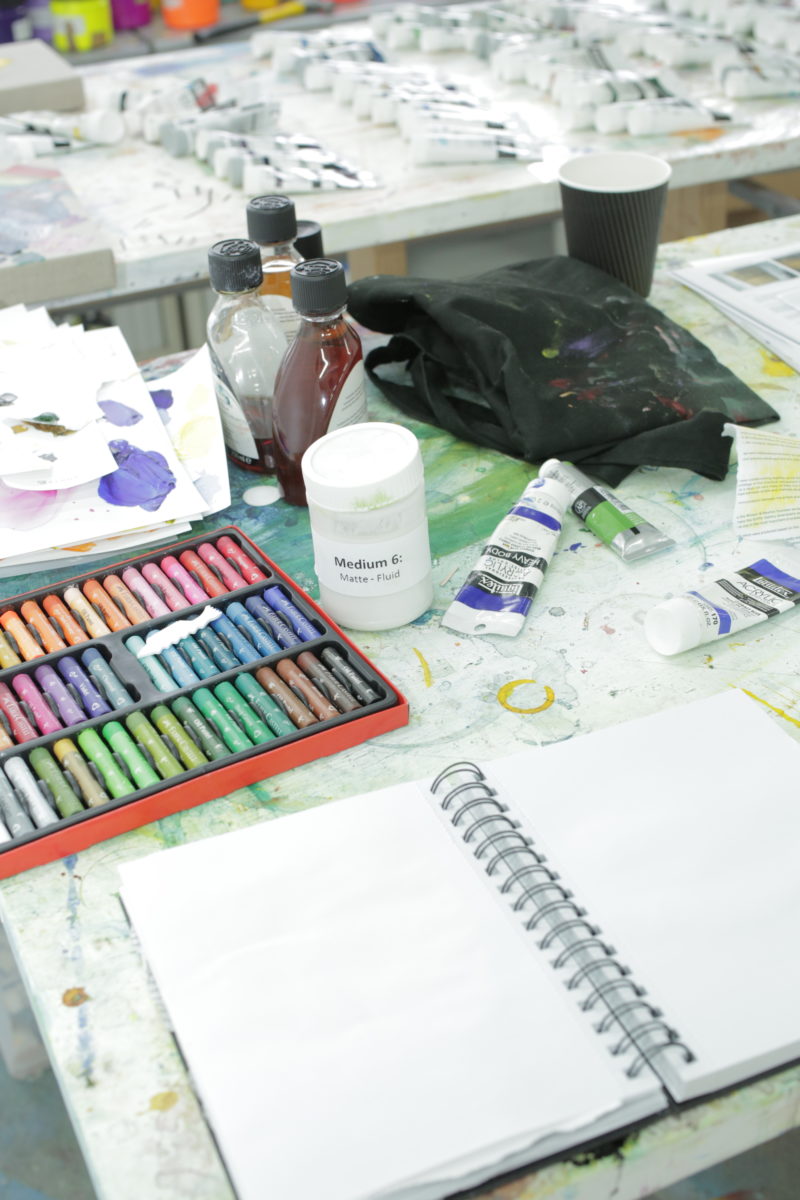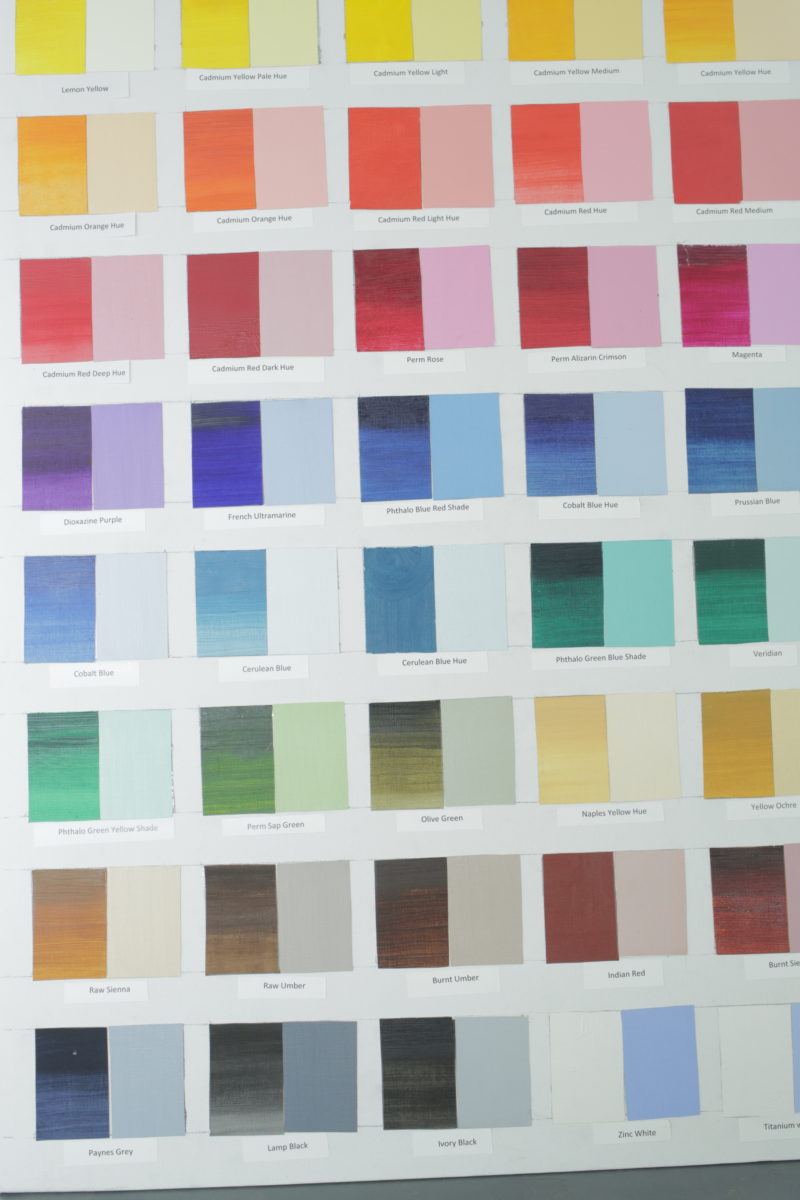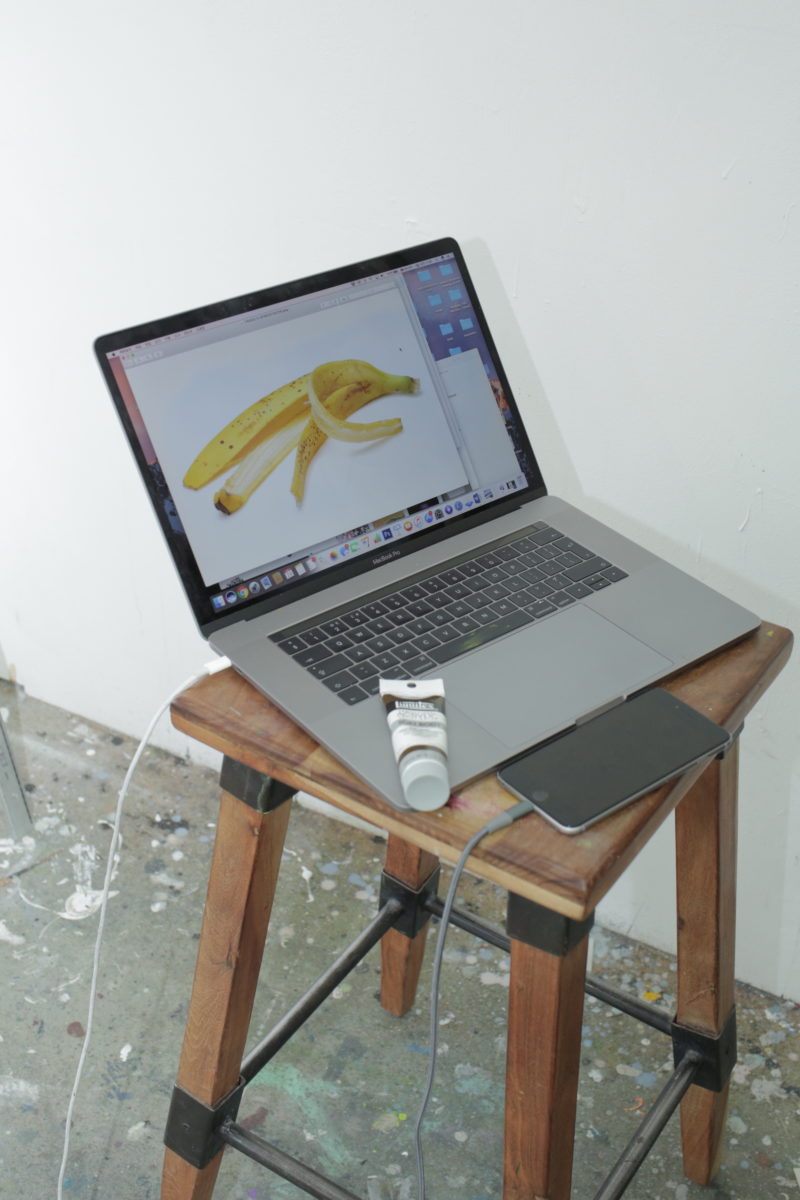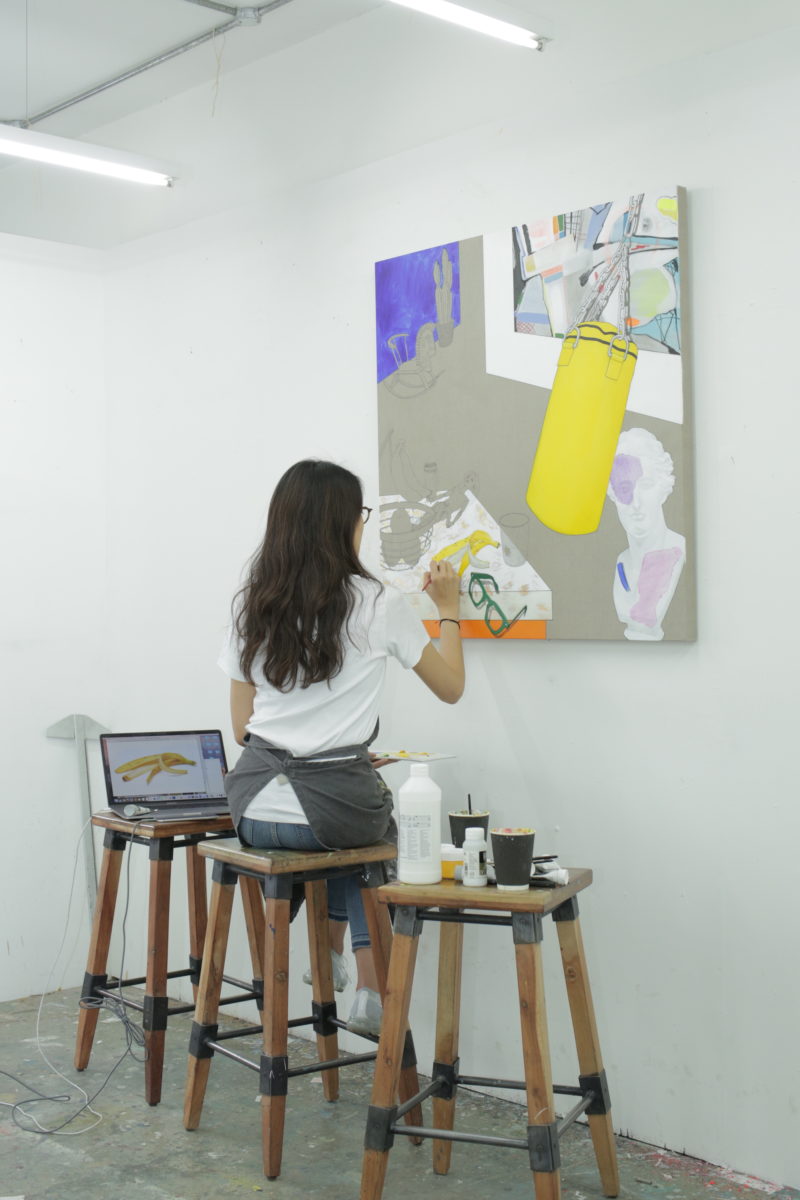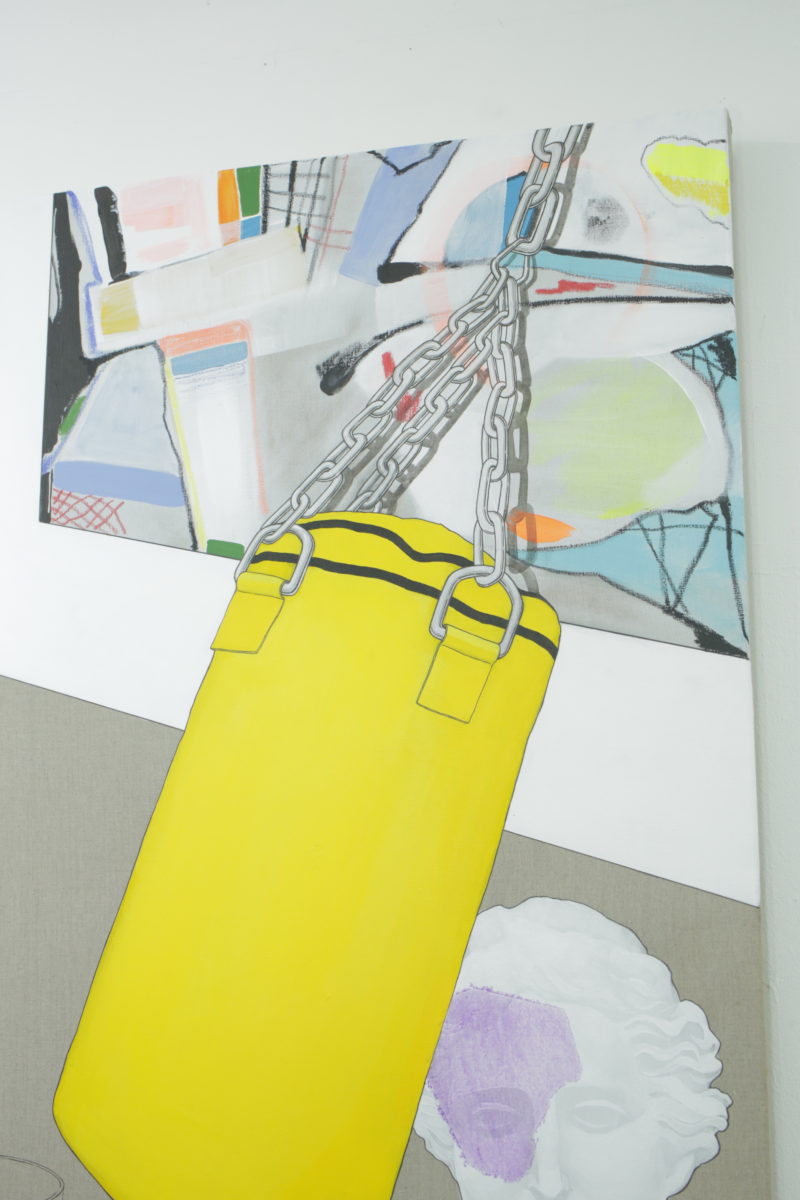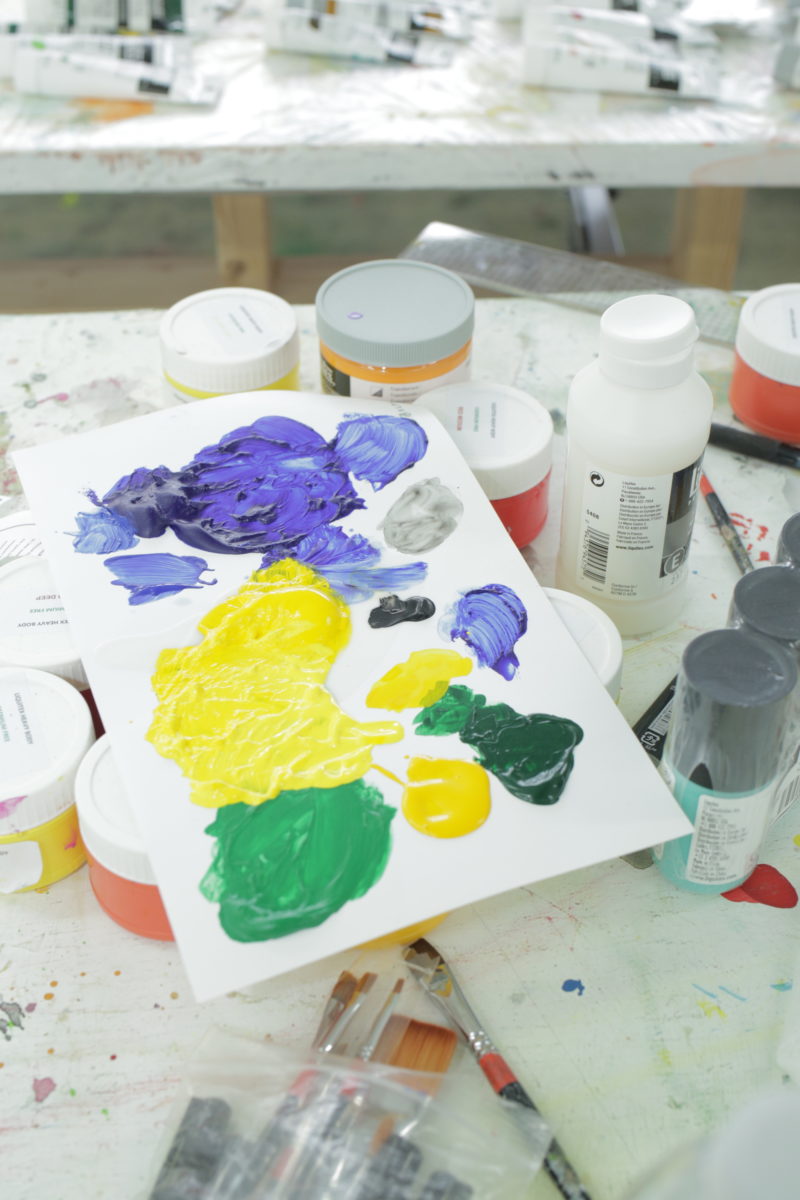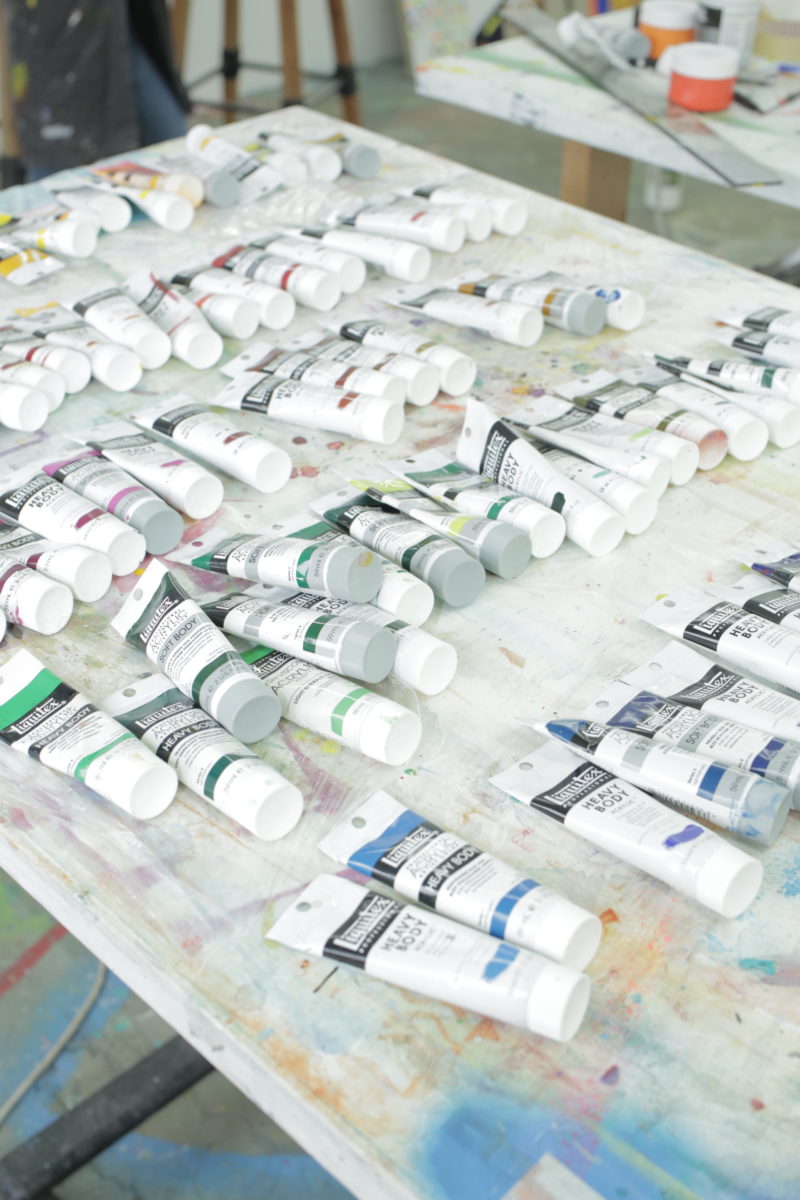
There’s more than meets the eye with the work of Sooyoung Chung. Her paintings of everyday objects, ordinary and benign, belie an undercurrent of personal history and cultural intuition. There are stories at play in her careful compositions, hidden just out of sight. Born in South Korea, Chung studied painting at the Royal College of Art (graduating just last year), where she began her ongoing Biographical Objects series, focused on items ranging from a water bottle to a discarded banana peel.
Nothing is overlooked by Chung, who is keenly attuned to her surroundings. She looks at spaces with an emotional gaze, seeking out unseen connections where they are least expected. On her residency with Elephant Lab, she has chosen to explore how subtle changes in colour can vastly affect mood and environment. Working closely with the paint laboratory at the head office of Winsor & Newton and Liquitex in London, she has been carrying out experiments in colour and tone.
What have you been working on since you’ve been at Elephant Lab?
I’ve been focused on the Liquitex acrylic; I’m quite interested in seeing how colours with the same name from different brands compare. Even if the colour has the same name, the results and mood can be quite different depending on the brand. It’s really interesting to see the differences in Cerulean blue across the brands, for example. I’ve been using the full range of colour from Liquitex.
Your experiments with colour are referenced explicitly in your painting of the laboratory, including all of the different paint samples. It’s part reality, part fiction. What interests you about this combination of the two?
It’s hard to define how I decide what to include in the scenes, as it’s really just what I’m feeling from this moment. Like if I see water, it’s water that we can drink to hydrate but there is also a feeling coming from this subject. I think there’s reality and then there’s an emotional movement, and they’re always coming together. I just want to put the seen with the unseen; they come together in strange ways.
“There’s reality and then there’s an emotional movement, and they’re always coming together”
It’s a layering, not just in terms of how you apply the paint, but in terms of the layers of understanding. It’s self-referential, especially with the inclusion of the paint laboratory that you have been working with. How much of this painting was based on reality?
Most of the objects are taken directly from the lab. I took a photoshoot before I started this residency, and then mostly I do a digital collage before I start a painting. So I just made the scene, but the duck, the medicine bottle and the apple actually came from someone’s table in the office outside of the lab. I just want to make it a bit fun, because they’re quite weird objects if they’re placed in the lab. They offer visual and compositional enjoyment, with the yellow and red, and interacts with this colour experiment. I wanted to have fun with the painting.
It’s interesting to start from a digital composition, even though it leads to a very physical painting. Why do you choose that way with digital elements, and how does that influence the outcome of the final painting?
Firstly, I feel like when I making the scene before I start the painting, I am like an interior designer and I am making a room inside of the computer. Also, because I use this raw linen on my canvas, I want to make sure I know how it will look as, if I do something wrong on the canvas, it’s hard to erase it. The raw linen is quite important to me.
With every single painting, I start with one significant object. This one started from the punching bag. So the punching bag is here, and then two days later I put something on my photoshop, and then I continue to make a scene and making a story. That’s the process of the painting.
How significant are the objects that you choose, and how much are you thinking about the hidden meanings or the reasons behind them?
In the case of the punching bag, it came about as there is a ju jitsu school really nearby the residency building. At the same time, in my country there has been a recent real issue of sex crimes within Korean high society, of very powerful men taking advantage of and abusing women. There is a hierarchy makes these women very repressed. I was watching Korean news and this was the major story, and then when I’m walking in the street here in London, there is this jiu jitsu and self-defence place, so I thought I wanted to make a painting that tackles this issue.
There is a punching bag and a barbie in my painting, and a banana. Also, a lot of women committed suicide as a result of that issue, so there is a pill bottle on the table, and a black eye too. These ideas are coming from intuition, with the self-defence place combining with this news, and I just really wanted to make this painting. It is all based on intuition and experiences from my everyday life, and then everything is put together in one painting.
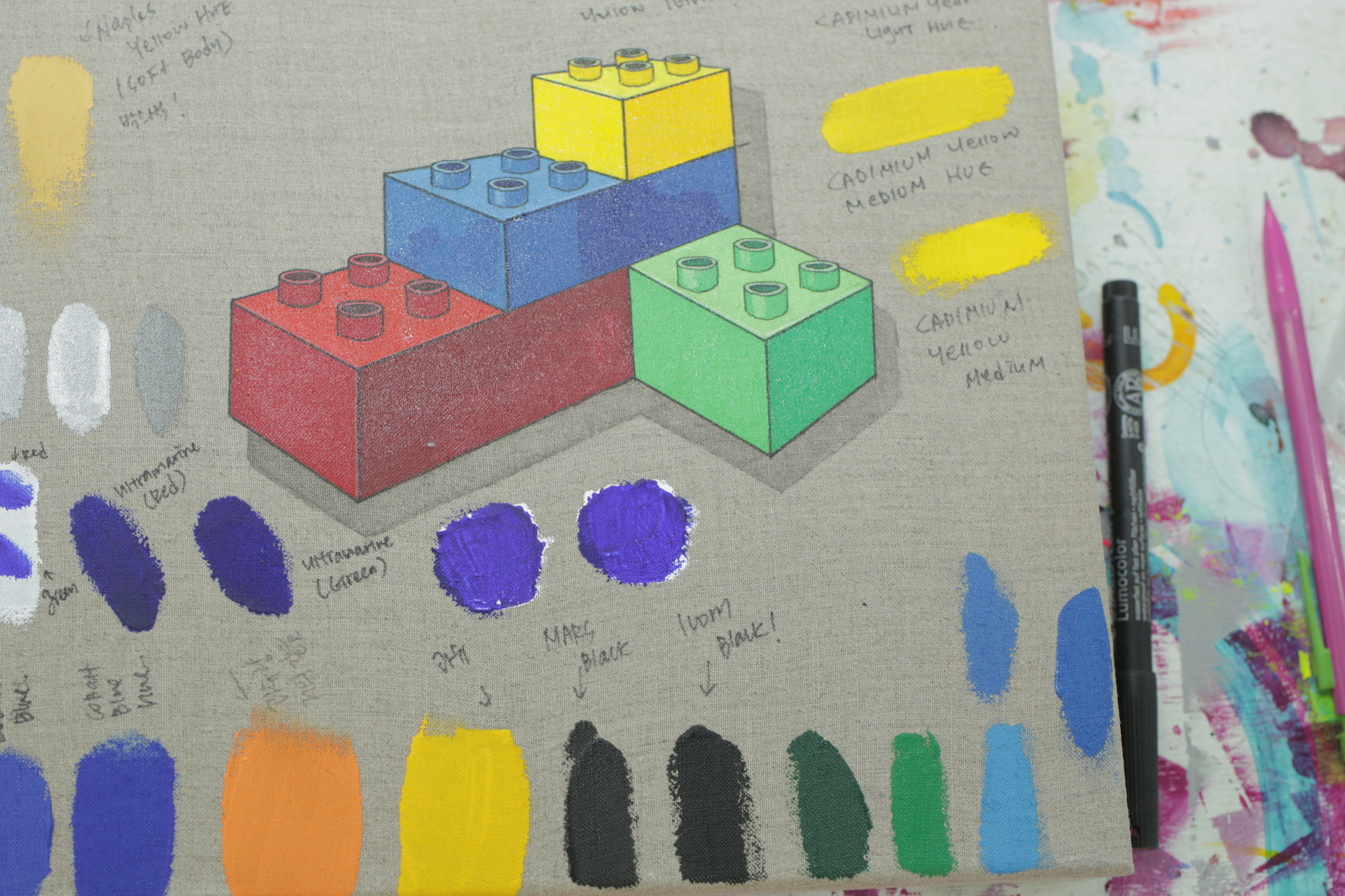
How long have you been in London, and how connected do you feel still to your background growing up in Korea?
I’ve been in London for two-and-a-half years, since I came to study at the RCA. I’ve stayed since finishing my MA, and I think I will stay for a while longer. I do these small paintings of single objects, part of an ongoing project, and I’ve done more than two hundred so far. But it’s funny, if I paint this kind of object here instead of in Korea, the object is quite different because what I’m seeing is different.
When I was in Korea, I was living at home with my parents, so I didn’t have to buy a single object (not even my toothbrush!) but when I moved abroad I suddenly had to buy everything, every object. What I see, my environment, is very important to my projects because I’m talking about objects and space, so I would like to experience different places in the future.
“With every single painting, I start with one significant object”
What interests you about colour specifically, and how did it become so central to your practice?
Colour is very emotional. In Korea, we don’t use paint on the wall, we mostly use wallpaper. So when I came here, I felt that the colourful paint on the wall created a very different mood. Pink, blue or yellow paint on the wall, even in the airport. This kind of environment is not common in Korea, and it’s a totally different mood if I’m in these different kinds of space.
That’s why I started these experiments with colour; they are emotional experiments with painting. It’s quite enjoyable for me. This residency has helped me to recognise even very subtle differences between colours that before I couldn’t see. It’s not special, but I think it is significant to everybody. Even a small change in tone or saturation can really change the mood in a painting.
Photographs by Louise Benson
Residencies at Elephant Lab
Practising artists are invited to make proposals for a one month residency at Elephant Lab
APPLY NOW